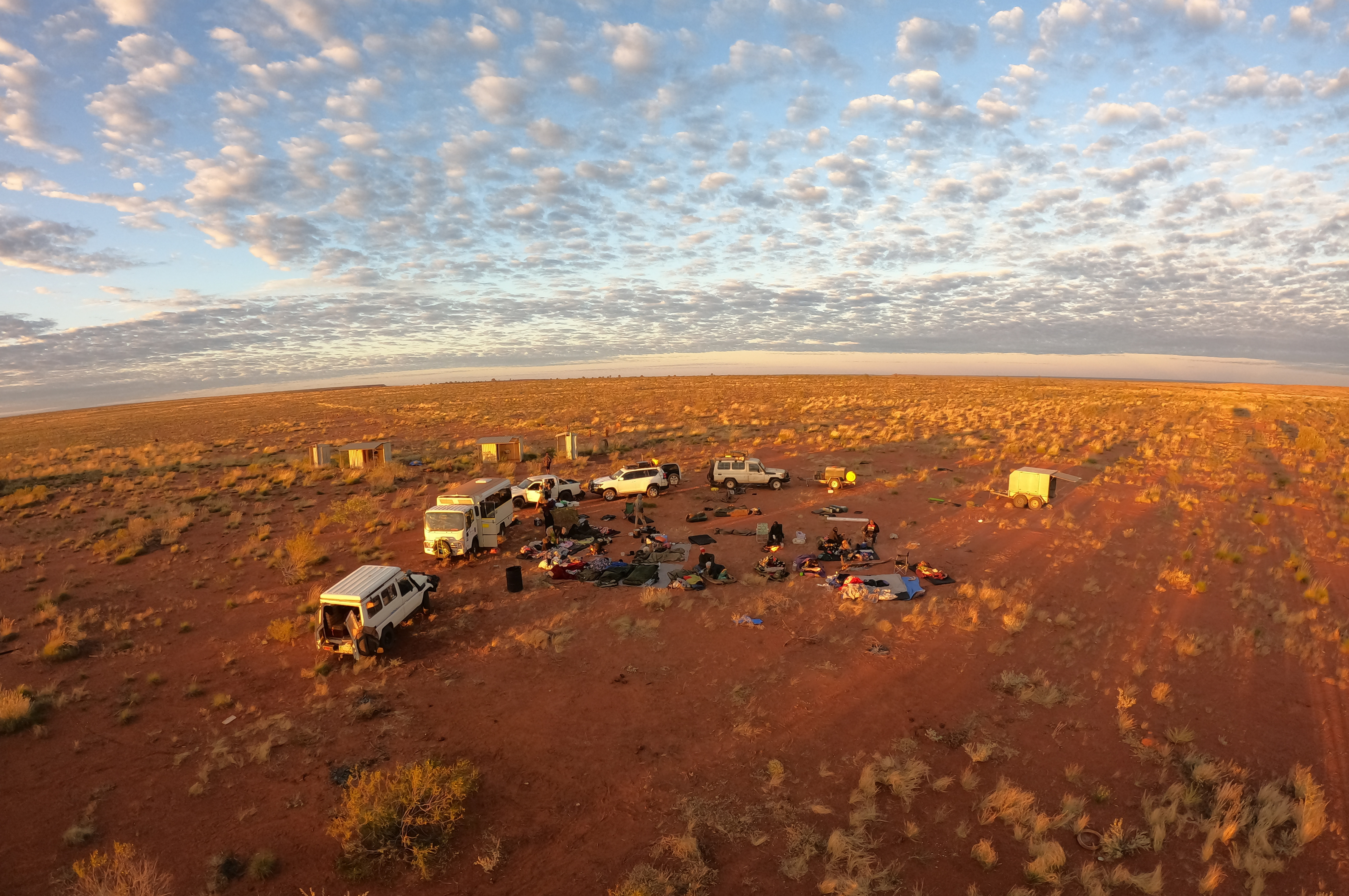Kukatja is an Australian Aboriginal language traditionally spoken across tracts of the Great Sandy and Tanami deserts in Western Australia. It is a member of a group of language varieties sometimes called the “Western Desert languages”, a mutually intelligible chain stretching from the southern edges of the Kimberley in the north to the Nullarbor Plain in the south; and from the Little Sandy Desert in the west to the Northern Territory border in the east. Some other named Western Desert language varieties include Wangkajunga, Yulparija, Pintupi, Martu (Wangka) and Pitjantjatjara. The latest census estimate (2021) puts the number of Kukatja speakers at approximately 450, while the total number of speakers of language varieties within the Western Desert group as a whole is in excess of 8000.
Kukatja is one of the focus languages of the OzSpace sociotopographic study. The Kukatja sub-project aims to document the grammar of spatial reference in Kukatja while investigating variation in spatial language use among members of the Kukatja community. In collaboration with Kukatja community members, Tom Ennever (a PhD student at Monash University) is responsible for the project’s Kukatja data collection and analysis. Data and results from the Kukatja sub-project will also contribute to Ozspace’s Topographic Correspondence study.
The Kukatja (and Ngardi) languages are associated with tracts of country south of Yagga Yagga (an outstation and former community south of Balgo). This is a region dominated by longitudinal tali “sand dunes” as well as regions of pamarr/panparli “rocky country”. This area of the Great Sandy Desert typically receives little moisture from the monsoonal rains to the north and seasonal access to water greatly influenced the mobility of Kukatja people prior to European contact. Partly due to this environmental pressure, Kukatja people retain a deep knowledge of, and connection to, different sources of permanent and semi-permanent waters on Kukatja country, including (to name but a few) tjurnu “soaks”, warrarnpa “claypans” and tjila “permanent or ‘living’ waters”.
The majority of Kukatja speakers today live in Balgo or the neighbouring communities of Mulan and Billiluna. Balgo was initially established as a Catholic Mission by the Pallottines in the late 1930s. Desert families continued to ‘walk in’ to the Old Mission site throughout the 1940s-50s and even into the 1960s before the entire settlement was moved east to its current location (Wirrimanu) in 1965. Due to its complex colonial history, many Balgo people have families to the north (with Jaru families at Ringer’s Soak), to the east (with Warlpiri families in Yuendumu and Lajamanu), to the west (with Walmajarri families in Fitzroy) and to the south (with Kukajta/Pintupi families in Kiwirrkurra). Many Balgo people have families even further afield, particularly in other desert communities, for example with Martu in Kunawarritji or with the Pintupi in Warlungurru [Kintore]). Balgo residents frequently travel huge distances to spend time in such communities as these visiting family and some have even grown up moving between such geographically disparate locations.
 |
|---|
| Piparr outstation looking south over Ngururrpa country (Ngardi/Kukatja) (source: Tom Ennever) |
Balgo is a highly multilingual and linguistically diverse community. Balgo residents across a wide range of ages typically speak more than one Australian Aboriginal language. Additional languages spoken in the community include Walmajarri, Ngardi, Jaru, Warlpiri, Ngalia, Pintupi and Wangkajunga. Multilingualism is the norm and is not uncommon for four or more languages to be represented in a single household. Kukatja speakers, especially younger generations, are all proficient in English, some also speaking Kriol as spoken in regions to the north. Certain members of the Balgo community also continue to make variable use of a traditional signed language—known locally as marumpu wangka. You can check out some of Balgo’s senior women exemplifying marumpu wangka here.
Kukatja, as a Western Desert language, belongs to the Pama-Nyungan family of Australian languages. Syntactically, it exhibits a mixture of dependent and head marking properties, having both a rich case marking system encoding grammatical (and local) functions as well as a complex system of cross-referencing enclitic bound pronouns. Kukatja has a number of features of so-called ‘non-configurational’ languages, exhibiting (grammatically) free word order, discontinuous phrase structure and frequent ellipsis of nominal arguments.